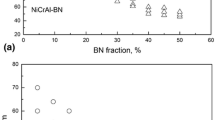The paper studies the influence of thermal treatment of the structure and properties of the composite coating consisting of chromium and titanium carbides and obtained by nonvacuum electron beam melting. It is shown that the coating tempering leads to a decrease in the microhardness and wear resistance. This is because the austenitic structure decomposition with the formation of the soft ferrite-carbide structure. The formation of very hard martensite strengthens the tempered coating and improves its microhardness, which is comparable with that of the initial coating after the electron beam melting. The wear resistance of the hardened composite coating is lower than that of the electron beam melted coating because of brittle martensite, which cannot retain hard carbide particles. The composite coating produced under the optimum treatment conditions possesses higher properties and does not require an additional thermal treatment, that can modify the structure and reduce the mechanical properties of the coating.
Similar content being viewed by others
References
S. N. Fadeev, M. G. Golkovski, A. I., Korchagin, et al., Radiat. Phys. Chem., 57, 653–655 (2000).
M. G. Golkovskii, Quenching and Relativistic Electron Beam Welding Without Vacuum. Process Capability [in Russian], LAP Lambert Academic Publishing, Saarbrücken (2013).
I. A. Bataev, D. O. Mul, A. A. Bataev, et al., Mater. Charact., 112, 60–67 (2016).
V. K. Narva, A. V. Marants, and Zh. A. Sentyurina, Izv. Vyssh. Uchebn. Zaved., Poroshkovaya metallurgiya i funktsional’nye pokrytiya, No. 4, 25–31 (2012).
A. J. Detor and C. A. Schuh, J. Mater. Res., 22, No. 11, 3233–3248 (2007).
J. Y. Chen, K. Conlon, L. Xue, et al., Mat. Sci. Eng. A-Struct., 527, 7265–7273 (2010).
H. Liu, K. Wang, X. Zhang, et al., Surf. Coat. Technol., 228, S296–S300 (2013).
J. Y. Chen, S. H. Wang, and L. J. Xue, J. Mater. Sci., 47, 779–792 (2012).
V. I. Gorynin, S. Yu. Kondrat'ev, and M. I. Olenin, Met. Sci. Heat Treat., 55, No. 10, 533–539 (2013).
T. A. Krylova, K. V. Ivanov, and V. E. Ovcharenko, Inorganic Materials: Applied Research, 10, 595–599 (2019).
T. Ya. Kosolapova, Carbides [in Russian], Metallurgiya, Moscow (1968).
Author information
Authors and Affiliations
Corresponding author
Additional information
Translated from Izvestiya Vysshikh Uchebnykh Zavedenii, Fizika, No. 11, pp. 23–27, November, 2020.
Rights and permissions
About this article
Cite this article
Krylova, T.A., Chumakov, Y.A. The Properties of Nonvacuum Electron Beam Melted Composite Coating after Thermal Treatment. Russ Phys J 63, 1861–1866 (2021). https://doi.org/10.1007/s11182-021-02244-2
Received:
Published:
Issue Date:
DOI: https://doi.org/10.1007/s11182-021-02244-2




